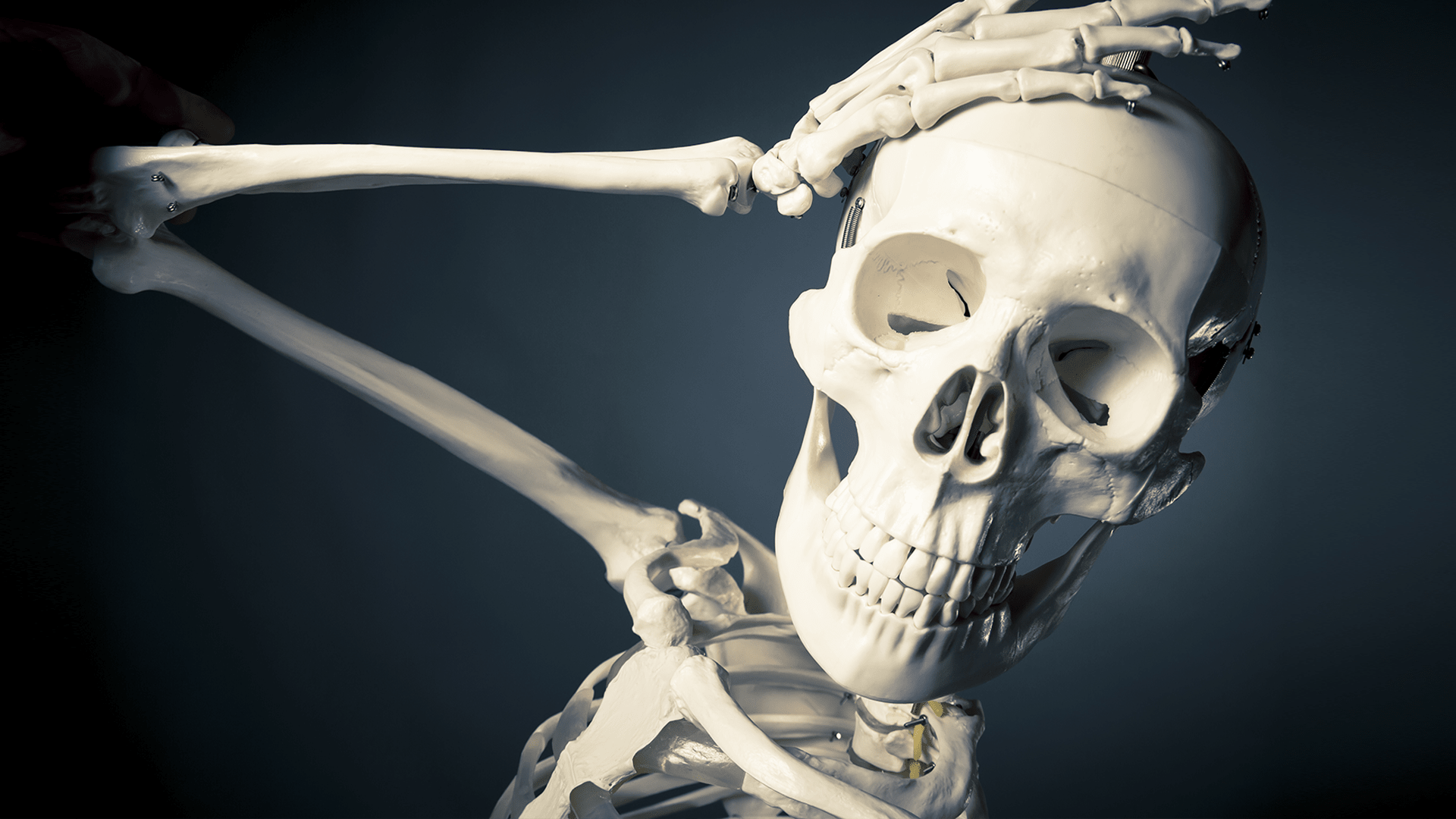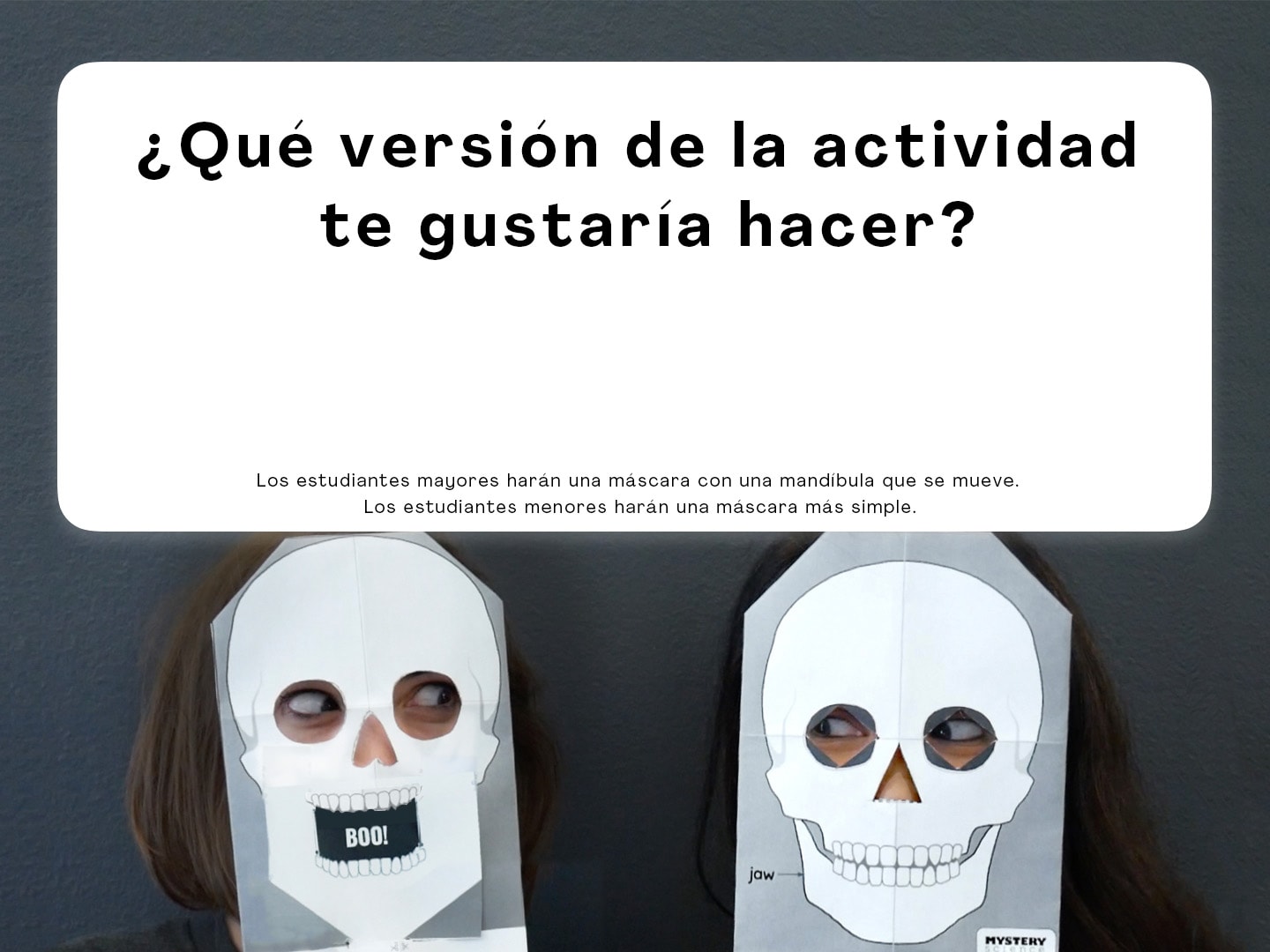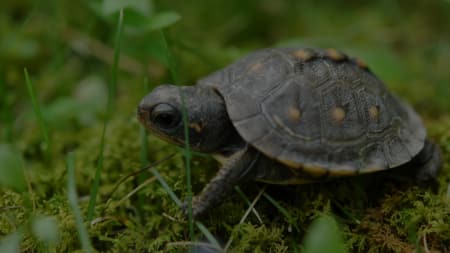Scroll for prep

Please wait…
This video is having trouble loading. You may have lost your Internet connection.
Step 1: Click to Reload this page
Step 2: Click to
Try our other video player
Step 3: contact support if trouble persists.
Or,
dismiss this message.
CONVERSEMOS:
¿Se te ocurren razones de por qué el cráneo es una parte importante del cuerpo humano? Hay varias.

Please wait…
This video is having trouble loading. You may have lost your Internet connection.
Step 1: Click to Reload this page
Step 2: Click to
Try our other video player
Step 3: contact support if trouble persists.
Or,
dismiss this message.

Please wait…
This video is having trouble loading. You may have lost your Internet connection.
Step 1: Click to Reload this page
Step 2: Click to
Try our other video player
Step 3: contact support if trouble persists.
Or,
dismiss this message.

Please wait…
This video is having trouble loading. You may have lost your Internet connection.
Step 1: Click to Reload this page
Step 2: Click to
Try our other video player
Step 3: contact support if trouble persists.
Or,
dismiss this message.
Paso
01/12
01/12
Tócate suavemente la cabeza y la cara con tus dedos. ¿Qué
partes se sienten duras? Esos son huesos. ¿Qué partes se
sienten suaves? ¿Qué otras cosas observas?
partes se sienten duras? Esos son huesos. ¿Qué partes se
sienten suaves? ¿Qué otras cosas observas?

Please wait…
This video is having trouble loading. You may have lost your Internet connection.
Step 1: Click to Reload this page
Step 2: Click to
Try our other video player
Step 3: contact support if trouble persists.
Or,
dismiss this message.
Paso
02/12
02/12
La parte superior de tu cabeza se llama cráneo. Pon la mano sobre
tu cabeza y siente tu cráneo.
tu cabeza y siente tu cráneo.

Please wait…
This video is having trouble loading. You may have lost your Internet connection.
Step 1: Click to Reload this page
Step 2: Click to
Try our other video player
Step 3: contact support if trouble persists.
Or,
dismiss this message.
Paso
03/12
03/12
El cráneo protege tu cerebro pero tiene agujeros en él. Conversemos:

Please wait…
This video is having trouble loading. You may have lost your Internet connection.
Step 1: Click to Reload this page
Step 2: Click to
Try our other video player
Step 3: contact support if trouble persists.
Or,
dismiss this message.
Paso
04/12
04/12
Los dos agujeros más grandes en tu cráneo son para tus cavidades
oculares. Pon tus dedos sobre tu ceja y traza el círculo del hueso
alrededor de tu ojo.
oculares. Pon tus dedos sobre tu ceja y traza el círculo del hueso
alrededor de tu ojo.

Please wait…
This video is having trouble loading. You may have lost your Internet connection.
Step 1: Click to Reload this page
Step 2: Click to
Try our other video player
Step 3: contact support if trouble persists.
Or,
dismiss this message.
Paso
05a/12
05a/12
Mira el cráneo en esta foto y luego siente tu nariz y tus orejas.
Conversemos.
Conversemos.

Please wait…
This video is having trouble loading. You may have lost your Internet connection.
Step 1: Click to Reload this page
Step 2: Click to
Try our other video player
Step 3: contact support if trouble persists.
Or,
dismiss this message.
Paso
05b/12
05b/12
Estas son algunas cosas que notamos. La punta de tu nariz y tus
orejas son flexibles. Están hechos de algo suave llamado cartílago.
¡No son de hueso!
orejas son flexibles. Están hechos de algo suave llamado cartílago.
¡No son de hueso!

Please wait…
This video is having trouble loading. You may have lost your Internet connection.
Step 1: Click to Reload this page
Step 2: Click to
Try our other video player
Step 3: contact support if trouble persists.
Or,
dismiss this message.
Paso
06/12
06/12
En la parte inferior de tu cabeza está tu mandíbula. Cuando abres l
a boca, mueves tu mandíbula. Mueve tu mandíbula como lo están
haciendo en el video.
a boca, mueves tu mandíbula. Mueve tu mandíbula como lo están
haciendo en el video.

Please wait…
This video is having trouble loading. You may have lost your Internet connection.
Step 1: Click to Reload this page
Step 2: Click to
Try our other video player
Step 3: contact support if trouble persists.
Or,
dismiss this message.
Paso
07/12
07/12
Obtén estos materiales. Escribe tu nombre en la hoja con el cráneo.

Please wait…
This video is having trouble loading. You may have lost your Internet connection.
Step 1: Click to Reload this page
Step 2: Click to
Try our other video player
Step 3: contact support if trouble persists.
Or,
dismiss this message.
Paso
08/12
08/12
Usa un lápiz para sombrear cualquier diente que te falte para que
tu máscara se parezca más a tu cráneo.
tu máscara se parezca más a tu cráneo.

Please wait…
This video is having trouble loading. You may have lost your Internet connection.
Step 1: Click to Reload this page
Step 2: Click to
Try our other video player
Step 3: contact support if trouble persists.
Or,
dismiss this message.
Paso
09/12
09/12
Dobla tu máscara a lo largo de la línea en el centro. Recorta la nariz
para dejar un agujero.
para dejar un agujero.

Please wait…
This video is having trouble loading. You may have lost your Internet connection.
Step 1: Click to Reload this page
Step 2: Click to
Try our other video player
Step 3: contact support if trouble persists.
Or,
dismiss this message.
Paso
10/12
10/12
Dobla la hoja de papel a lo largo de la línea que atraviesa los ojos.
Corta a lo largo de las líneas punteadas. Desdobla y aplana la hoja.
Corta a lo largo de las líneas punteadas. Desdobla y aplana la hoja.

Please wait…
This video is having trouble loading. You may have lost your Internet connection.
Step 1: Click to Reload this page
Step 2: Click to
Try our other video player
Step 3: contact support if trouble persists.
Or,
dismiss this message.
Paso
11/12
11/12
Voltea la hoja. Dóblala a lo largo de todas las líneas. Dobla las
esquinas. Dobla la parte superior y dobla los lados. Remarca
cada doblez con tu uña.
esquinas. Dobla la parte superior y dobla los lados. Remarca
cada doblez con tu uña.

Please wait…
This video is having trouble loading. You may have lost your Internet connection.
Step 1: Click to Reload this page
Step 2: Click to
Try our other video player
Step 3: contact support if trouble persists.
Or,
dismiss this message.
Paso
12/12
12/12
Ponte la máscara del cráneo y mira a través de los agujeros
para tus ojos. Muéstraselo a un amigo o amiga y cuéntale lo que
aprendiste sobre el cráneo el día de hoy.
para tus ojos. Muéstraselo a un amigo o amiga y cuéntale lo que
aprendiste sobre el cráneo el día de hoy.

Please wait…
This video is having trouble loading. You may have lost your Internet connection.
Step 1: Click to Reload this page
Step 2: Click to
Try our other video player
Step 3: contact support if trouble persists.
Or,
dismiss this message.

Please wait…
This video is having trouble loading. You may have lost your Internet connection.
Step 1: Click to Reload this page
Step 2: Click to
Try our other video player
Step 3: contact support if trouble persists.
Or,
dismiss this message.
Paso
01/18
01/18
Tócate suavemente la cabeza y la cara con tus dedos. ¿Qué
partes se sienten duras? Esos son huesos. ¿Qué partes se
sienten suaves? ¿Qué otras cosas observas?
partes se sienten duras? Esos son huesos. ¿Qué partes se
sienten suaves? ¿Qué otras cosas observas?

Please wait…
This video is having trouble loading. You may have lost your Internet connection.
Step 1: Click to Reload this page
Step 2: Click to
Try our other video player
Step 3: contact support if trouble persists.
Or,
dismiss this message.
Paso
02/18
02/18
Tu cabeza está compuesta de dos partes: tu cráneo y tu mandíbula.
El cráneo protege tu cerebro pero hay agujeros en él. Conversemos:
El cráneo protege tu cerebro pero hay agujeros en él. Conversemos:

Please wait…
This video is having trouble loading. You may have lost your Internet connection.
Step 1: Click to Reload this page
Step 2: Click to
Try our other video player
Step 3: contact support if trouble persists.
Or,
dismiss this message.
Paso
03/18
03/18
Los dos agujeros más grandes en tu cráneo son para tus cavidades
oculares. Pon tus dedos sobre tu ceja y traza el círculo del hueso
alrededor de tu ojo.
oculares. Pon tus dedos sobre tu ceja y traza el círculo del hueso
alrededor de tu ojo.

Please wait…
This video is having trouble loading. You may have lost your Internet connection.
Step 1: Click to Reload this page
Step 2: Click to
Try our other video player
Step 3: contact support if trouble persists.
Or,
dismiss this message.
Paso
04a/18
04a/18
Siente tu nariz. Después, fíjate en el cráneo en esta foto.
Conversemos:
Conversemos:

Please wait…
This video is having trouble loading. You may have lost your Internet connection.
Step 1: Click to Reload this page
Step 2: Click to
Try our other video player
Step 3: contact support if trouble persists.
Or,
dismiss this message.
Paso
04b/18
04b/18
Estas son algunas cosas que notamos. La punta de tu nariz es
flexible. Está hecha de algo suave llamado cartílago. No es hueso, así
que por eso puedes ver un agujero en el cráneo.
flexible. Está hecha de algo suave llamado cartílago. No es hueso, así
que por eso puedes ver un agujero en el cráneo.

Please wait…
This video is having trouble loading. You may have lost your Internet connection.
Step 1: Click to Reload this page
Step 2: Click to
Try our other video player
Step 3: contact support if trouble persists.
Or,
dismiss this message.
Paso
05a/18
05a/18
Fíjate en esta foto del cráneo de perfil. Conversemos:

Please wait…
This video is having trouble loading. You may have lost your Internet connection.
Step 1: Click to Reload this page
Step 2: Click to
Try our other video player
Step 3: contact support if trouble persists.
Or,
dismiss this message.
Paso
05b/18
05b/18
He aquí algunas cosas que hemos notado. Las orejas son flexibles,
justo como la punta de tu nariz. No están hechas de hueso y por eso
ves un orificio pequeño en el cráneo donde deben estar tus orejas.
justo como la punta de tu nariz. No están hechas de hueso y por eso
ves un orificio pequeño en el cráneo donde deben estar tus orejas.

Please wait…
This video is having trouble loading. You may have lost your Internet connection.
Step 1: Click to Reload this page
Step 2: Click to
Try our other video player
Step 3: contact support if trouble persists.
Or,
dismiss this message.
Paso
06/18
06/18
En la parte inferior de tu cabeza está tu mandíbula. Cuando abres
la boca, mueves tu mandíbula. Mueve tu mandíbula como lo están
haciendo en el video.
la boca, mueves tu mandíbula. Mueve tu mandíbula como lo están
haciendo en el video.

Please wait…
This video is having trouble loading. You may have lost your Internet connection.
Step 1: Click to Reload this page
Step 2: Click to
Try our other video player
Step 3: contact support if trouble persists.
Or,
dismiss this message.
Paso
07/18
07/18
Obtén estos materiales. Cada persona necesitará dos hojas porque
tu cabeza está compuesta de dos partes: el cráneo y la mandíbula.
tu cabeza está compuesta de dos partes: el cráneo y la mandíbula.

Please wait…
This video is having trouble loading. You may have lost your Internet connection.
Step 1: Click to Reload this page
Step 2: Click to
Try our other video player
Step 3: contact support if trouble persists.
Or,
dismiss this message.
Paso
08/18
08/18
Delinea cada diente en la mandíbula y en el cráneo. Si te faltan
dientes, sombrealos de negro para que tu máscara se parezca
más a tu propio cráneo.
dientes, sombrealos de negro para que tu máscara se parezca
más a tu propio cráneo.

Please wait…
This video is having trouble loading. You may have lost your Internet connection.
Step 1: Click to Reload this page
Step 2: Click to
Try our other video player
Step 3: contact support if trouble persists.
Or,
dismiss this message.
Paso
09/18
09/18
Dobla la hoja a la mitad, a lo largo de la línea de en medio. Recorta
el área de la nariz. Luego corta las líneas para hacer tres hendiduras.
Por último, cortarás la esquina y la tira lateral.
el área de la nariz. Luego corta las líneas para hacer tres hendiduras.
Por último, cortarás la esquina y la tira lateral.

Please wait…
This video is having trouble loading. You may have lost your Internet connection.
Step 1: Click to Reload this page
Step 2: Click to
Try our other video player
Step 3: contact support if trouble persists.
Or,
dismiss this message.
Paso
10/18
10/18
Dobla el papel de nuevo a lo largo de esta línea. Recorta las
cavidades oculares, luego desdobla y aplana la hoja.
cavidades oculares, luego desdobla y aplana la hoja.

Please wait…
This video is having trouble loading. You may have lost your Internet connection.
Step 1: Click to Reload this page
Step 2: Click to
Try our other video player
Step 3: contact support if trouble persists.
Or,
dismiss this message.
Paso
11/18
11/18
Voltea la hoja y dobla las esquinas. Después, dobla la parte superior
y dobla los lados hacia dentro. Remarca cada doblez con tu uña.
y dobla los lados hacia dentro. Remarca cada doblez con tu uña.

Please wait…
This video is having trouble loading. You may have lost your Internet connection.
Step 1: Click to Reload this page
Step 2: Click to
Try our other video player
Step 3: contact support if trouble persists.
Or,
dismiss this message.
Paso
12/18
12/18
Para hacer la mandíbula, corta a lo largo de las líneas punteadas.
No olvides las líneas de cada lado donde dice "¡Buu!"
No olvides las líneas de cada lado donde dice "¡Buu!"

Please wait…
This video is having trouble loading. You may have lost your Internet connection.
Step 1: Click to Reload this page
Step 2: Click to
Try our other video player
Step 3: contact support if trouble persists.
Or,
dismiss this message.
Paso
13/18
13/18
Para hacer la manija de la mandíbula, dobla a lo largo de las líneas.
Dobla la A sobre la B, luego dobla esa sobre la C. Por último, dobla
la C sobre la D. Repite esto del otro lado.
Dobla la A sobre la B, luego dobla esa sobre la C. Por último, dobla
la C sobre la D. Repite esto del otro lado.

Please wait…
This video is having trouble loading. You may have lost your Internet connection.
Step 1: Click to Reload this page
Step 2: Click to
Try our other video player
Step 3: contact support if trouble persists.
Or,
dismiss this message.
Paso
14/18
14/18
Dale la vuelta a la mandíbula y dobla la parte blanca sobre donde
dice "buu." Desliza la manija a través de las hendiduras.
dice "buu." Desliza la manija a través de las hendiduras.

Please wait…
This video is having trouble loading. You may have lost your Internet connection.
Step 1: Click to Reload this page
Step 2: Click to
Try our other video player
Step 3: contact support if trouble persists.
Or,
dismiss this message.
Paso
15/18
15/18
Mete la parte que dice "¡Buu!" de esta forma.

Please wait…
This video is having trouble loading. You may have lost your Internet connection.
Step 1: Click to Reload this page
Step 2: Click to
Try our other video player
Step 3: contact support if trouble persists.
Or,
dismiss this message.
Paso
16/18
16/18
Esta máscara no funciona exactamente como un cráneo de verdad.
Conversemos:
Conversemos:

Please wait…
This video is having trouble loading. You may have lost your Internet connection.
Step 1: Click to Reload this page
Step 2: Click to
Try our other video player
Step 3: contact support if trouble persists.
Or,
dismiss this message.
Paso
17/18
17/18
Para ver cómo se mueve tu mandíbula cuando abres la boca,
mira este video. Conversemos:
mira este video. Conversemos:

Please wait…
This video is having trouble loading. You may have lost your Internet connection.
Step 1: Click to Reload this page
Step 2: Click to
Try our other video player
Step 3: contact support if trouble persists.
Or,
dismiss this message.
Paso
18/18
18/18
Ponte la máscara del cráneo y mira a través de los agujeros
para tus ojos. Muéstraselo a un amigo o amiga y cuéntale lo que
aprendiste sobre el cráneo el día de hoy.
para tus ojos. Muéstraselo a un amigo o amiga y cuéntale lo que
aprendiste sobre el cráneo el día de hoy.
🎉
That’s it for this lesson! How did it go?
Extend this lesson
Sign up now for more great lessons!




